I don’t think I’ve written about this particular application before, but I do think it’s a valid option for existing classroom doors. I’d like to know what you think, and if there are potential problems or concerns.
This is an older classroom building in a university, and the existing locks are traditional classroom function – there was no way to lock the doors during an active shooter event without opening them and using a key in the outside lever.
Outside lever (left) and inside lever (right):
An electric strike was added, and the outside lever is kept in the locked position at all times. If you’re not familiar with electric strikes, the strike keeper controls the latchbolt. When the keeper is secured (when the room is locked), the door can not be opened from the outside but there is free egress from the inside by turning the lever. When the strike keeper is not secured (when the room is unlocked), the door can be opened from the inside or outside by pushing or pulling on the door. There is no need to turn the inside lever, although the door can be opened to allow egress that way.
Here is a video of the door being opened from the inside when the strike keeper is not secured (when the room is unlocked); the door can be pulled open from the outside as well:
A switch near the door can be used to lock the door in case of an active shooter event. The university has used the term “barricade” to mean “lock the door”, but unlike a barricade the lock will still allow free egress when the door is locked.
There is instructional signage beside the door, and the photo on the right is a side view of the switch enclosure where you can see the switch behind the “lock to barricade” sign. It’s possible that the switch could also alert the campus police or other personnel of an active shooter event in progress – I don’t know if this switch is set up this way, but it could be done. The electric strikes could also be controlled from a remote location.
So, what do you think? What are the pros and cons of this application?
WWYD?
Note: I don’t know if this particular door is a fire door. It does have a closer (which needs to be adjusted) and wired glass, which could be indicators of a fire door assembly. To modify an existing labeled frame for an electric strike, permission for a field modification most be obtained from the listing lab, or the frames would need to be relabeled in the field. Current editions of the model codes do not typically require fire door assemblies on classrooms.
You need to login or register to bookmark/favorite this content.

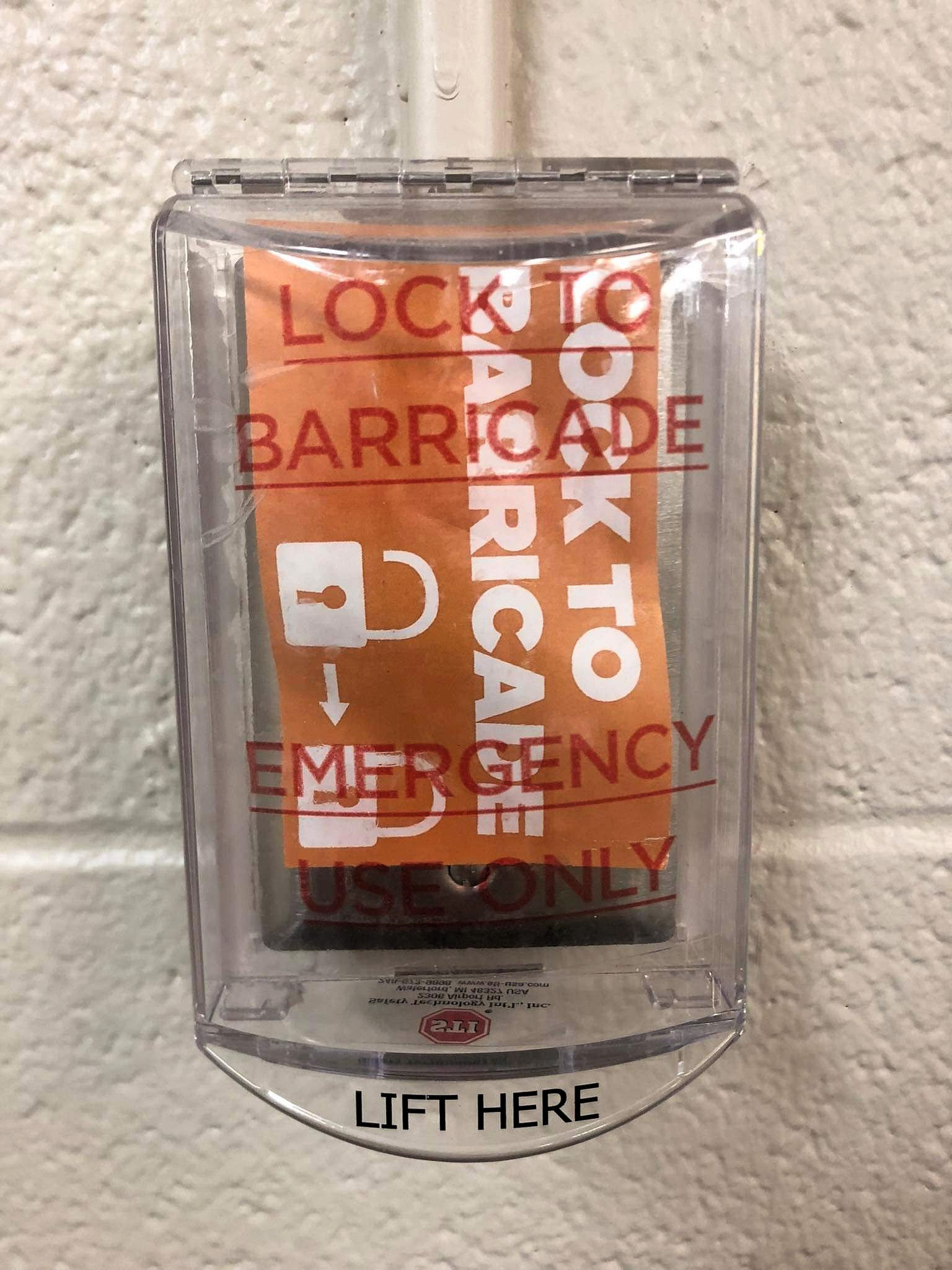

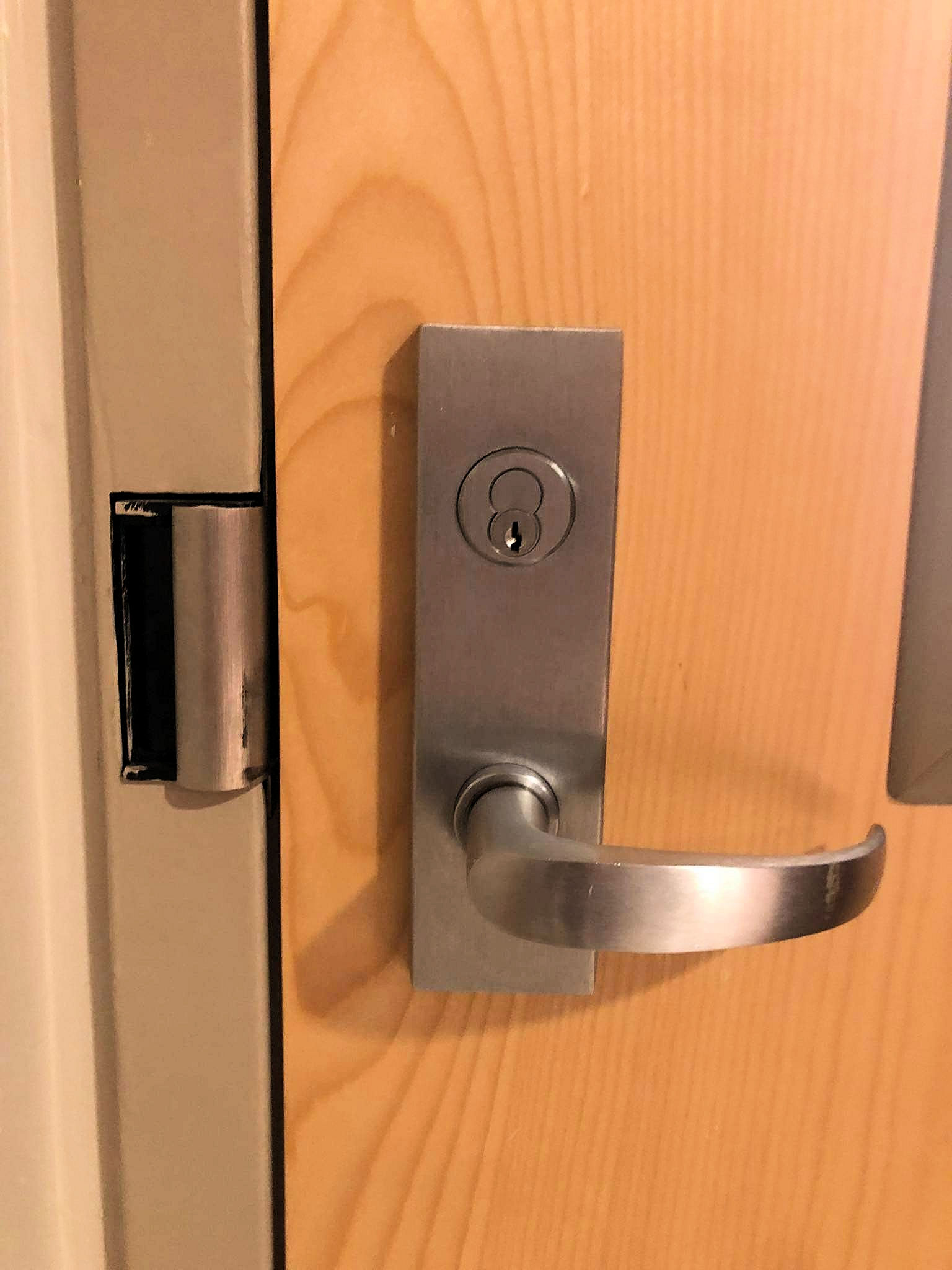

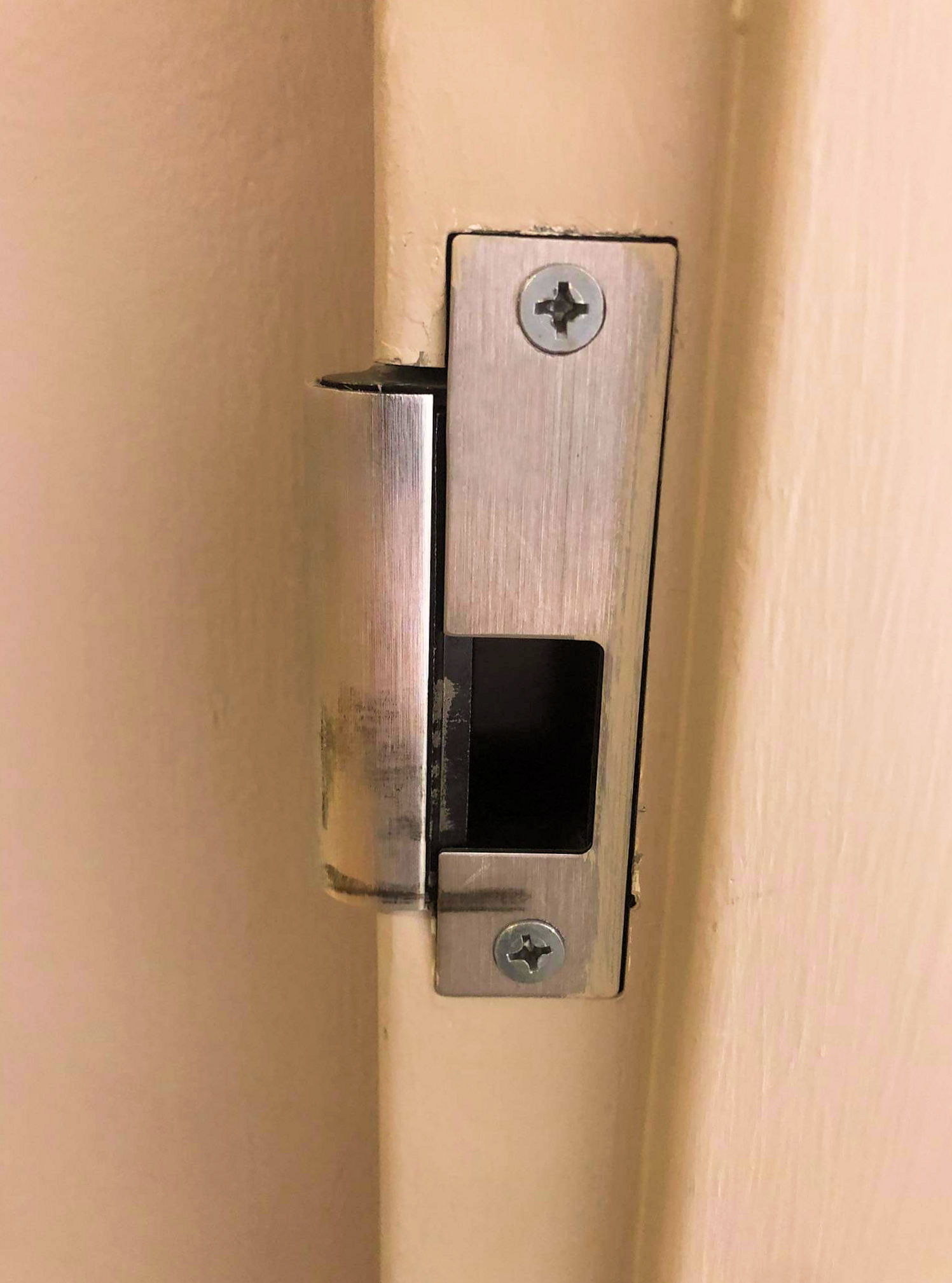
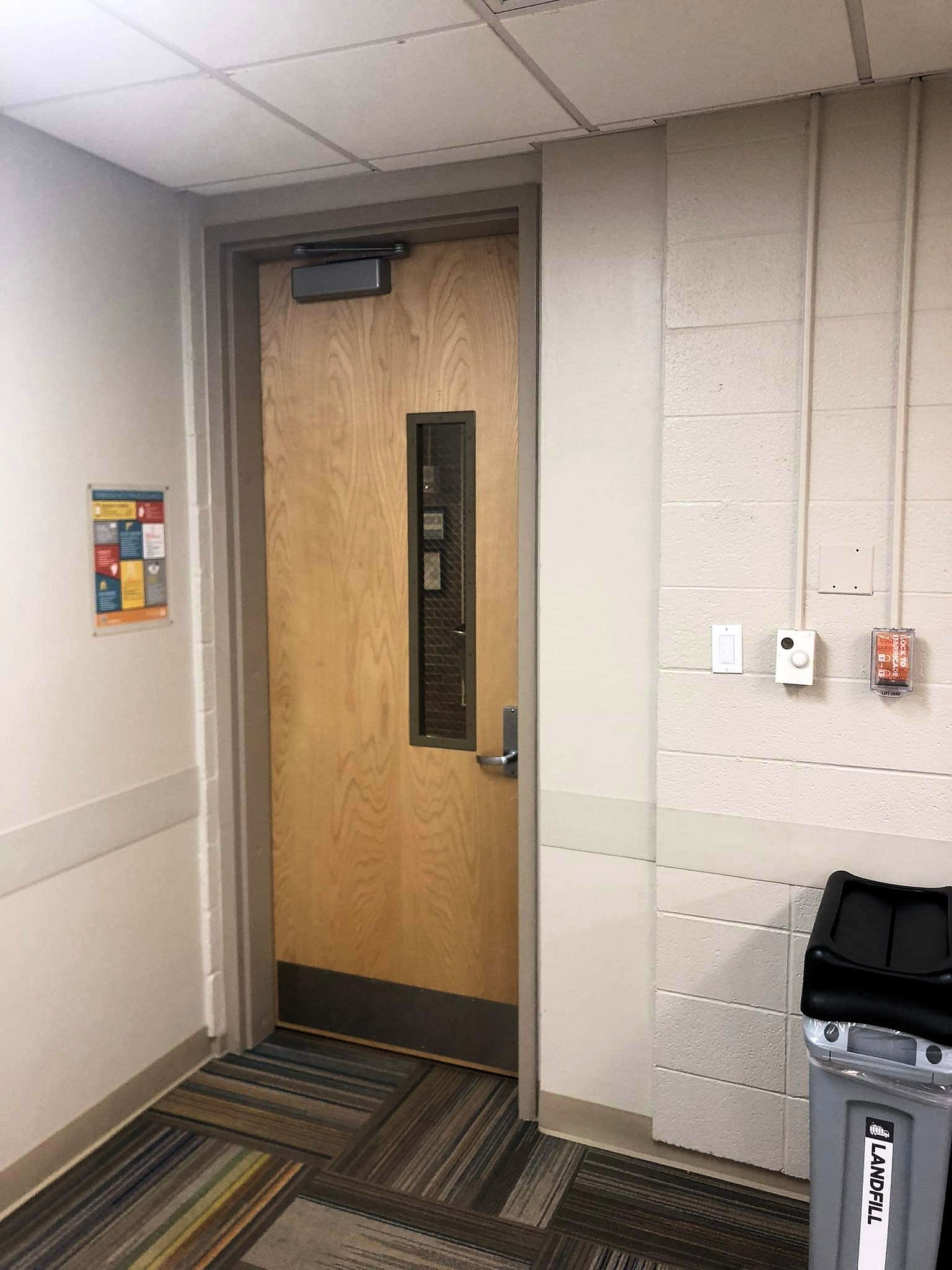
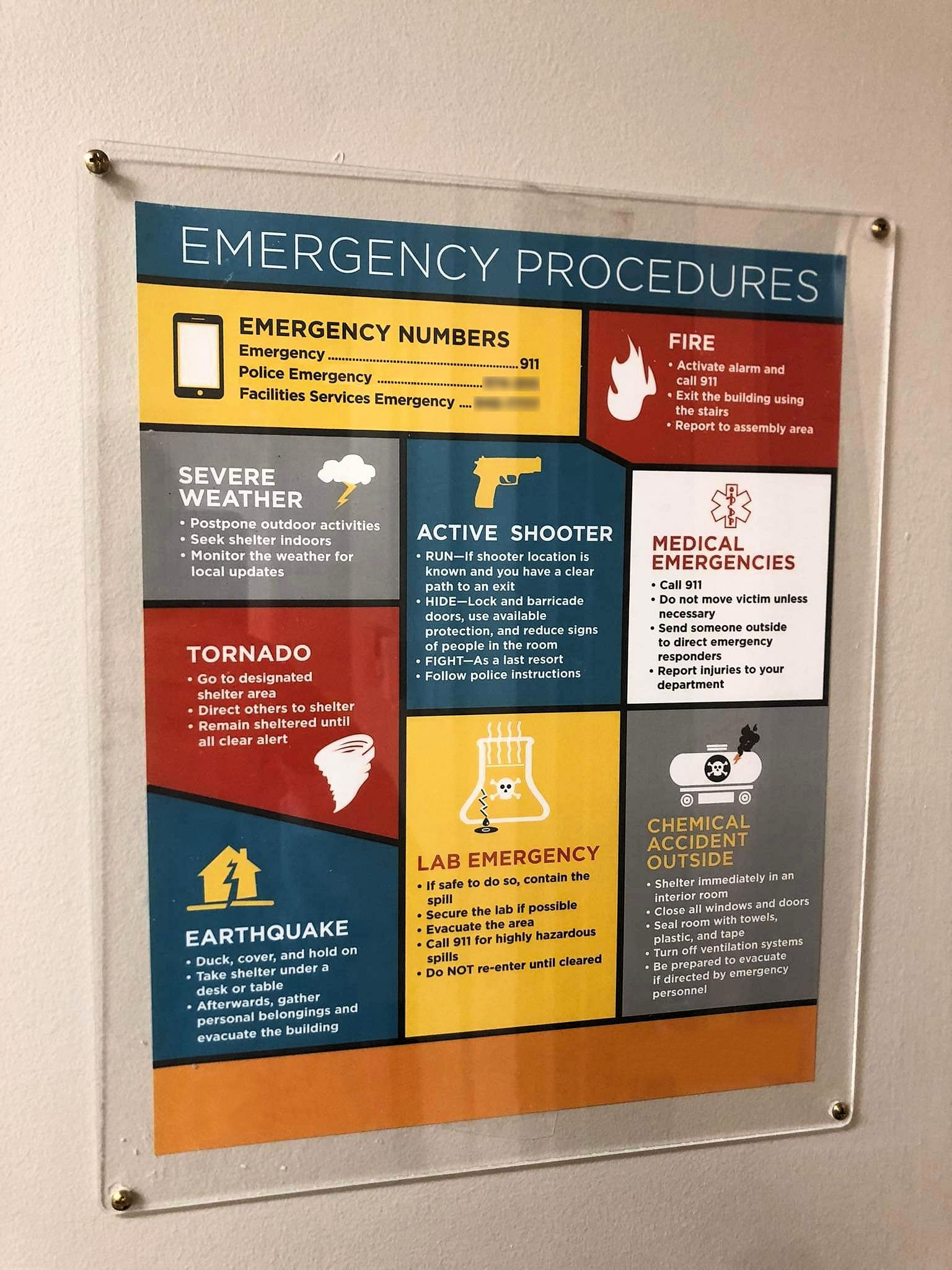

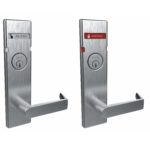
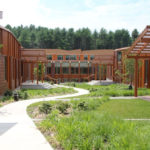
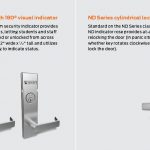





Having worked in university campus law enforcement and thought about this many times, this is the best possible solution to the problem. We had easy commands to lock down the exterior doors to our buildings, but in my opinion, any room equipped in this way should only be locked by someone in the room. It would be a horrible tragedy for a person or group of people to be denied a safe shelter in an unoccupied classroom because the door locked automatically.
Thanks for sharing your insight, Bobby! That’s a really good point about remote locking – it could reduce the time to get occupied classrooms locked but could also keep people in the hallways from entering an empty classroom.
– Lori
A fire rating would complicate things somewhat since the strike would need to be fail secure but it could still be made to work. Most people will instinctively reach for the lever to exit unless they get out of the habit over time. However, I have to wonder about the cost to do this as opposed to replacing the lock or, perhaps, just the lock body. Wiring, power supplies, the strikes, the frame modifications… It can all add up quickly.
The cost can definitely add up, but maybe the university is monitoring the buttons and using them to alert the campus police vs. using mechanical locks to secure the classroom without sending a signal somewhere. I’m also thinking that the button might discourage students from locking the doors – a thumbturn would be an invitation to secure the room and have some “private time.” My photographer (AKA my kid) would not push the button even when I offered to send extra snacks to her dorm. 🙂
– Lori
We installed something similar at our university. We used electrified Von Duprin trim. When the “panic button” is pressed, power is cut to all doors in the room, thus locking the doors.
That sounds perfect! Any problems?
– Lori
We don’t call them problems – They are challenges 😉 A few of the doors had automatic openers without electric strikes and we had to use a QEL and electrified trim. This enabled the push button on the outside to work normally unless the panic button was pressed.
The only existing challenge we have is the only way to lock the rooms at the end of the day is to use the panic button. The first person has to use a key to unlock the door and then reset the panic button.
You could have a key switch or other access control reader that locks and unlocks all the doors (via the strikes), or they could be on a timer.
– Lori
None of these doors have electric strikes. We have 2 or more panic buttons in the rooms (depending on the size of the room). If any of them are pressed, all doors lose power and are locked. To unlock the doors, the button that was pushed must be reset.
To save money each room is a stand-alone system. No access controller. Do you have a recommendation for a timer we could wire inline and program locally? It would need to be tamper-resistant.
Oh – right! I was still thinking about the application in the post (electric strikes) and I forgot that you had electrified panic hardware, but the idea would be the same. I have asked someone from the local Allegion office to get in touch with you about a recommendation for how to handle a timer or other type of control. They have a better handle on that than I do. 🙂
– Lori
I would think that it would be important to ensure that authorized individuals, such as emergency responders or school administration or teachers would be provided with methods of unlocking the door from the exterior. This would be important in the event of a school bully locking the teacher out.
Also I would think that the locking device would be able to be de-activated by someone inside to allow other in that are seeking safe haven.
I agree that there needs to be authorized access from the exterior – the key could be used for that. To let someone in, anyone could turn the lever to open the door from the inside.
– Lori
We did this to one classroom at our university as a trial. I retired and do not know if they have continued the practice. The doors had VD99 exit devices (2 pair) with EL latch retraction using VD 863? power supply and were controlled by a stand alone Omni lock wall mounted unit. We placed a latching emergency push button with a cover at the front of the room in the teacher area that would interrupt the Omni lock signal and lock the doors. All that needed to be done to reset the system was to turn the latching knob and let it pop out.
Thanks Rich!
– Lori
Do you have to push the “barricade” button to secure the door even when there isn’t an emergency?
I see the benefit to allow anyone the ability to lock the door without a key. Seems like a more affordable (and less complicated) solution may be a double cylinder classroom security lock though.
The main problem is that nobody seems to have keys – the rooms are basically open when the building is open.
– Lori
The cost to install electric strikes far exceeds the cost of changing the lock to the appropriate function. Classroom doors should be closed and locked when classes are in session. There is a balance between safety and convenience. If kids are late getting to class, they will disrupt the instructor as someone has to get up and open the door Maybe that in and of itself would help encourage kids to get to class on time. Schools need more robust communication systems than someone pushing a button to lock a door that should be locked anyway. Stem school in Colorado had the shooter walk in the room because the door was not latched. The goal should be not to allow access.
Hi Mark –
I don’t think having doors constantly locked would fly in this university setting. The doors in this classroom building are kept unlocked all the time from what I can tell.
– Lori
Can’t the door be left unlocked with the key? if so this action would bypass the system and be unlocked all the time, i.e. you would have to go out in the hall to lock the door.
I don’t think the university distributes keys. But yes, a key would defeat the system.
– Lori
Why not just change the lockset out for a 9456 corridor lock or something like that? That way the door is unlocked but if the deadbolt is thrown on the inside the outside is locked. Even if the deadbolt is thrown you can freely exit the room by simply turning the handle which would release both the latch and the deadbolt. Giving free egress with the ability to lock it on the inside without the need of a power supply and a door strike with lengthy instructions on how to use it. Just a thought.
Hi Mark –
I wasn’t involved in this particular situation, but I do know that many colleges struggle with the balance between having security when it’s needed, but preventing the classrooms from being turned into a place for “mischief” by allowing the doors to be locked mechanically by anyone and everyone.
– Lori
a strike exposed on the pull side of the door frame puts the whole opening at risk. All it takes to compromise the keeper is a pen or pocket knife.
True, but in an active shooter situation they are not usually taking the time to try to defeat the lock.
– Lori
A Classroom Security Function lock would depend on the teacher/professor to have access to a key to lock the door from the inside without having to open the door. That would be the most cost affective solution vs. an electronic locking control function.
Hi Mike –
I think that is challenging in higher ed because of how the classrooms are used. I see a lot of campuses going to electrified locks.
– Lori
At the institution where I work, we were going to install a blue pull station (similar to a fire pull) that was DPDT with an audible cover on our classrooms. The thought was one switch would kill power to the lock while the other gave an alarm signal to our campus police that the pull had been activated. That, of course, would be followed with an officer to come and reverse the action. We’ve yet to do it (cost being the most prohibitive factor), but we still have the demo device in my office.
Von Duprin’s ESL is another great solution (for panic devices, of course) and we plan on installing it on an office suite that has a 99-QEL with a LCN 4642. When it is fully installed, activating the ESL will kill power to the QEL and the outside button relay, so the only way in is via the key override or the folks setting the ESL back to normal.
Sounds like a good plan, Andrew!
– Lori
We looked at this as a possibility when we set up our classrooms. Unfortunately many of our classroom doors are consider 20 minute fire doors and electric strikes can not be used on a fire door. We opted for mechanical mortise locks with indicators and utilized the S2 function VD exit devices on rooms requiring them. I am not particularly fond of electric strikes as their failure usually causes a door to be in an unsecured state.
Fail secure is always a better option.
Hi Ed –
There are fail secure electric strikes that can be used on fire doors, but they would have to be powered all the time to keep the doors unlocked, with power cut when the room needs to be secured. Electric strikes aren’t my favorite, but I thought this was an interesting application.
– Lori
Does anyone have experience with the Securitech Safebolt? It is essentially a deadbolt that is engaged with the push of a button and can be retrofit over a ciylindrical lever. There is also a mortise version called the Quick Intruder Deadbolt.
They still allow free egress and have a key override from the exterior. Neither needs power. I don’t think they can be set to lock from a central point, but as Bobby pointed out earlier, it may not make sense to lock classroom doors leavinbg students in the halls with no way to get into a classroom.
Hi Patrick –
I haven’t had direct experience with the product (maybe another reader has), but it does meet the requirements of the model codes. As far as I know, these locks can’t be locked remotely, but that is not a model code requirement. On the topic of remote locking…if classroom doors are equipped with code-compliant electrified locks and are locked remotely during a lockdown, the doors can be opened manually from the inside to let people in from the hallway.
– Lori